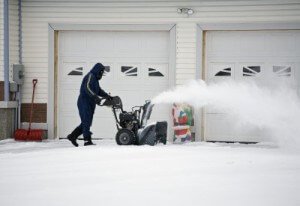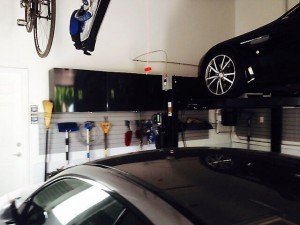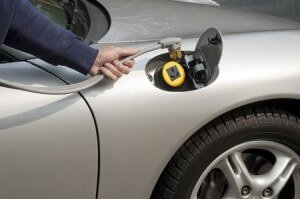 With all this snow, ice and fluctuating temperatures, our garages weather storms and thaws that take its toll on our homes. Especially, cold winter days affects the exterior areas of our home including the garage door and the mechanisms that allow it to continue to function flawlessly and effectively.
With all this snow, ice and fluctuating temperatures, our garages weather storms and thaws that take its toll on our homes. Especially, cold winter days affects the exterior areas of our home including the garage door and the mechanisms that allow it to continue to function flawlessly and effectively.
Neglecting the changing weather conditions will lead to unforeseen hiccups in the early morning work routines to get to work causing stress that we can all easily avoid. Here are some ways to prepare and avoid possible problems which an overnight winter freeze can cause for homeowners.
Replacing Broken Garage Door Springs
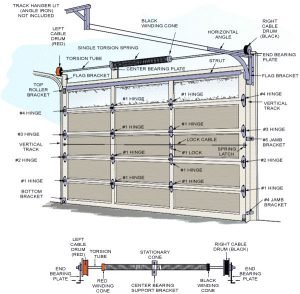 Broken garage door springs are a very common garage door repair. Garage doors with the adequate number of garage door springs installed for the size and weight of the garage door will last on average ten thousand cycles. One cycle is one opening followed by one closing of the garage door. If there are two vehicles leaving and entering the garage at different times of the day, these springs may last about 5 years. If you have a more hectic family lifestyle than two cycles per day, you may want to invest in extended lifespan torsion springs which cost more but can last up to 4x longer.
Broken garage door springs are a very common garage door repair. Garage doors with the adequate number of garage door springs installed for the size and weight of the garage door will last on average ten thousand cycles. One cycle is one opening followed by one closing of the garage door. If there are two vehicles leaving and entering the garage at different times of the day, these springs may last about 5 years. If you have a more hectic family lifestyle than two cycles per day, you may want to invest in extended lifespan torsion springs which cost more but can last up to 4x longer.
To assess whether the garage door springs may need replacement, take a look to see if there is rust on the springs. Rusty springs may mean that your garage door springs are on the way out. To prevent rust build up and maximize the life of the garage door springs, spray the springs down 3 to 4 times per year with WD-40. If there is already rust on the springs, you’ll want to test them further.
Garage Door Balance Check
A garage door balance check will help determine if the torsion springs are losing their effectiveness and will need replacement. The garage door balance check should be done once a year especially in the winter when springs are most likely to fail. The garage door balance check is easy to do.
To check door balance, lift the door halfway up and let it go. If the springs are in good working order, the door should sit completely still as it is let go. If the door drops or sags as it is let go, the torsion springs are showing wear and tear. It’s probably time to change the garage springs to avoid any issues.
Garage Door Cable Repairs
If the garage door doesn’t work, it may mean the garage door cable is broken. The garage cable or sometimes called aircraft cable is used to prevent the garage door spring from flying off like a bullet if it were to snap. The cable is located near the bottom corner of the door and loops up to the top of the door where it counterbalances the tension of the spring. The cable itself is under a lot of tension so it’s not advisable for the average person to try to replace it.
Instead, prevent damage to vehicles and belongings or injury to family members by checking the cable and preventing a cable failure. To check garage door cables, do a visual inspection and look for corrosion, rust, or fraying garage door cables. If any of these signs appear, call in a specialist to replace the cables.
Have Smooth Running Garage Door Rollers
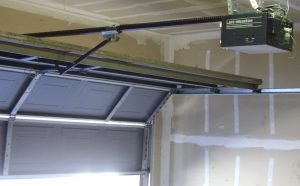 Garage door rollers make sure the garage door rolls up smoothly and quietly. They either have open ball bearings or enclosed ones. If they have open bearings, then they should be lubricated 3 – 4 times per year to ensure long lasting rollers.
Garage door rollers make sure the garage door rolls up smoothly and quietly. They either have open ball bearings or enclosed ones. If they have open bearings, then they should be lubricated 3 – 4 times per year to ensure long lasting rollers.
If you see that there is damage to either the rubber or nylon parts of the rollers then it’s time to replace the rollers. Other signs that the garage door rollers need replacement include wiggling of the rollers in the track as the door rolls up or down. Or, if you see the roller is locked and / or you hear grinding of the door as it opens or closes, the rollers are in need of replacement.
When the Garage Door is Frozen Shut
Each year, the weather stripping should be checked for cracks, breaks and pliability to assure that it is doing its job. Not only does it help save energy and keep the garage and vehicles warm for an easy to start to the day, but it also prevents the garage door from becoming stuck.
If on an icy morning, the garage door has becomes frozen shut and you have checked that the door is not damaged in some other way, check to make sure it is unlocked. Then, use the release cord to manually open the door. If the garage door will not open with some moderate effort, then you may need to use a hair dryer or heat gun and alternatively, hot water to melt the ice below the garage door.
On days, where you suspect an overnight freeze, be sure to apply some rock salt around the base of the garage door. Also, it’s a good idea to apply WD-40 to the weather stripping along the bottom edge of the door to improve your chances of avoiding a garage door being frozen shut.
The Annual Garage Door Check Up
If you garage door is functioning well, an annual garage door checkup is the best way to ensure that all the parts are operating well and to replace or repair parts before they malfunction. You can take all these steps yourself or call a professional service such as Aurora Overhead Doors Inc. to do the repairs safely.



